
Discover what to see in the sky during May 2020, including the Eta Aquarids meteor shower.
(Details given are for London and may vary for other parts of the UK)
Top 3 things to see in the night sky in May:
- Throughout the month: Try to spot the International Space Station.
- 5/6 May: Keep your eyes open - it's the peak of the Eta Aquarids meteor shower.
- Mid-May: Grab a pair of binoculars and look at Comet C/2017 T2 (Panstarrs).
Look Up! Podcast
Subscribe and listen to the Royal Observatory Greenwich's podcast - Look Up! As well as taking you through what to see in the night sky each month, Royal Observatory Greenwich astronomers pick a topic to talk about. For May, they're chatting about where life may have first formed on the Earth. Have a listen below, then cast your vote on our Twitter poll (@ROGAstronomers) during the first week of the month.
Our podcast is available on iTunes here
Astronomy in May 2020: key events and what to see

Being firmly in the spring months with the length of daylight hours increasing, dark skies for stargazing are becoming more limited to a few hours between the late evening and very early morning. In fact by the end of the month, London will no longer experience true night time as the Sun will not dip far enough below the horizon at night for the skies to be dark – from late May until late July we will be in astronomical twilight for much of the night. Even with the limited dark hours for stargazing, May boasts many astronomical highlights.
Throughout the month: The Plough and the ISS
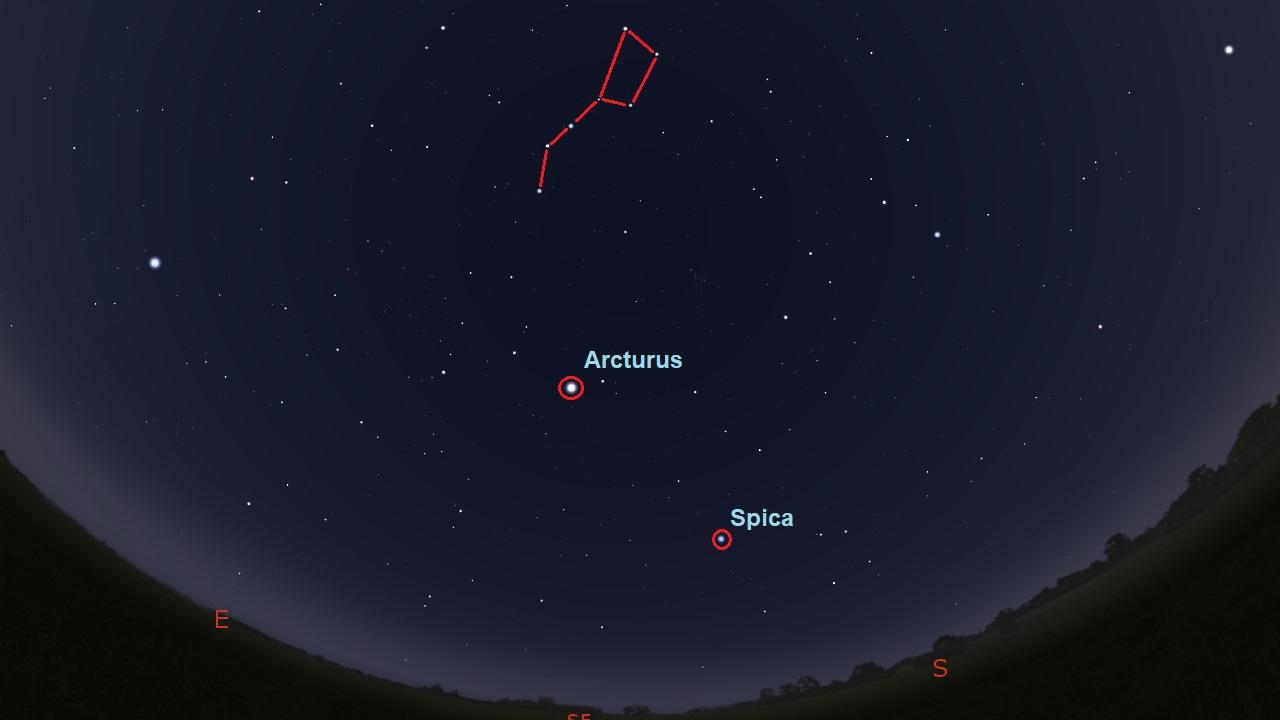
Throughout the month look for the famous star pattern the Plough or the Big Dipper high in the south around midnight. Use an astronomical saying to find a few bright stars by following the handle of the Plough to ‘arc to Arcturus’ the brightest star in the constellation of Boötes. Then follow through and ‘speed on to Spica’ - Virgo’s brightest star.

During the month you may even want to try and spot the International Space Station (ISS). It’s the largest artificial satellite in orbit around the Earth and due to its giant reflective solar panels, it can be seen easily from the Earth – a bright point of light moving across the sky in a matter of minutes. Visit Spot the Station, NASA's dedicated ISS website which will tell you when and where to spot it.
5/6 May: Eta Aquarids meteor shower
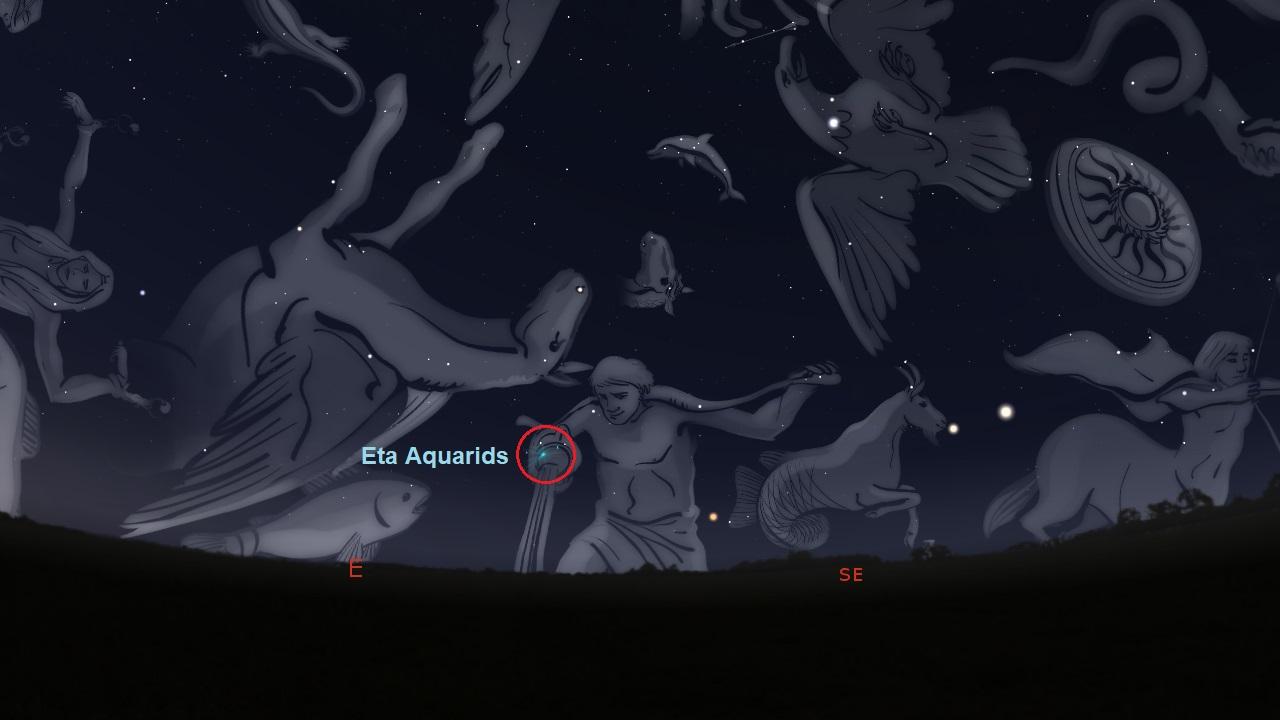
On the night of the 5th going into the 6th of May, the Eta Aquarids annual meteor shower will reach its peak. As the Earth orbits the Sun at this time of the year it ploughs into the debris left by comet Halley to produce the Eta Aquarids meteor shower (and later in the year, the Earth will once again plough into the same trail of debris left by comet Halley and will produce the Orionids meteor shower in October). The best time to see this event will be after midnight but the radiant of the Eta Aquarids meteor shower which lies in the constellation of Aquarius won’t rise above the eastern horizon until after 3.30am. With a peak rate of roughly 50-60 meteors you may be able to spot a few but the light of the waxing gibbous moon in the southwest will likely hinder your view. Nevertheless, if you can find a clear view of the eastern horizon, scan the skies in that area using just your eyes – they’re the best tool for the task!
7 May: Super full flower moon
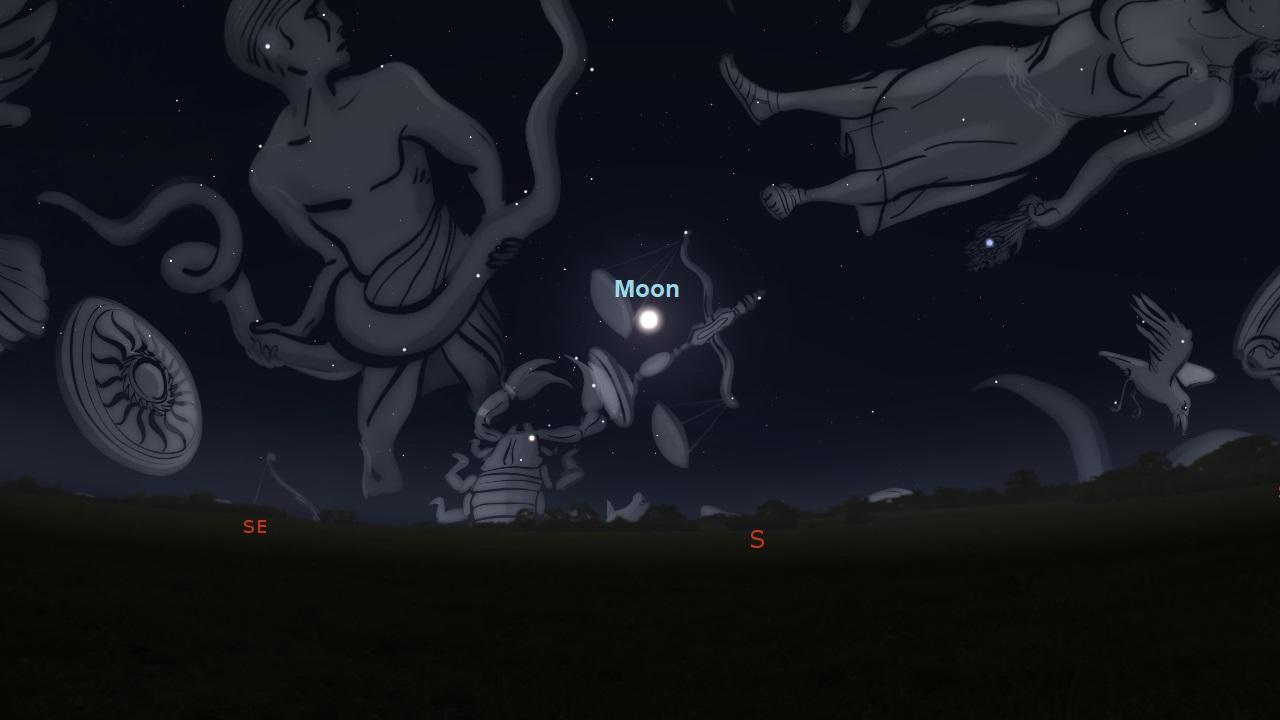
The full moon this month occurs on the 7 May and will be found lying in the constellation of Libra close to the bright red star Antares in the constellation of Scorpius. In many cultures, names are given to each full moon and often reflect changes in nature or the seasons. The May full moon is often known as the full flower moon as it signifies the time of year when temperatures start to rise, and many flowers come into bloom. But this month’s full moon is also the last of three supermoons in 2020 – the other two having occurred in March and April. A supermoon occurs when the Moon it near it closest point to the Earth in its elliptical orbit whilst coinciding with a full (or new) moon. This super full flower moon will be visible after 9:30pm when it rises in the southeast and visible all night until it sets in the southwest at dawn on the following morning. The apparent increase in size and brightness won’t be easily perceptible but full moons are always a treat to spot.
Mid-May: Comet C/2017 T2 (Panstarrs)
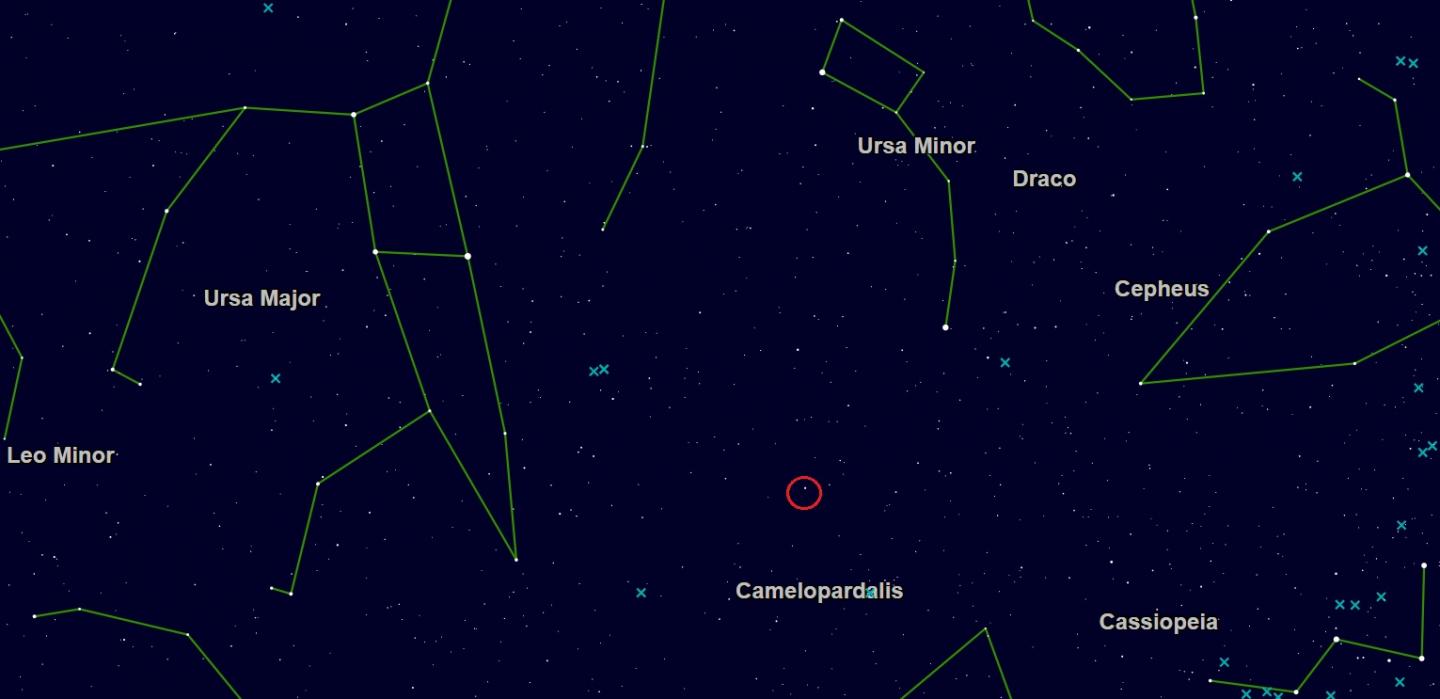
Comet C/2017 T2 (Panstarrs) is forecast to appear at its brightest from Earth around the middle of May after reaching perihelion (closest approach to the Sun) in early May. It will be well placed close to the north celestial pole so high above the horizon throughout the night. Comets are credited for their beautiful tails created by the Sun’s radiation vaporising the comet’s volatile materials and carrying dust away with it. Reaching a predicted magnitude of 8.5 or 9, it won’t be visible to the naked eye but should be visible through a pair of binoculars with a faint fuzzy nebulous envelope or coma present.
14 May: The Moon and three planets

The Moon reaches its last quarter phase on the 14 May and will join Jupiter, Saturn and Mars in the predawn south-eastern sky. All four are visible to the naked eye but a moderate telescope (3 to 5-inch aperture) will reveal some of their details. At the quarter phase – pointing a telescope to the terminator on the Moon (the boundary between the dark and light sides) will reveal many craters vividly. You could also try to make out the bands on Jupiter, the rings around Saturn and the reddish hue of Mars with the whitish polar caps at its poles.
The Moon's phases this month
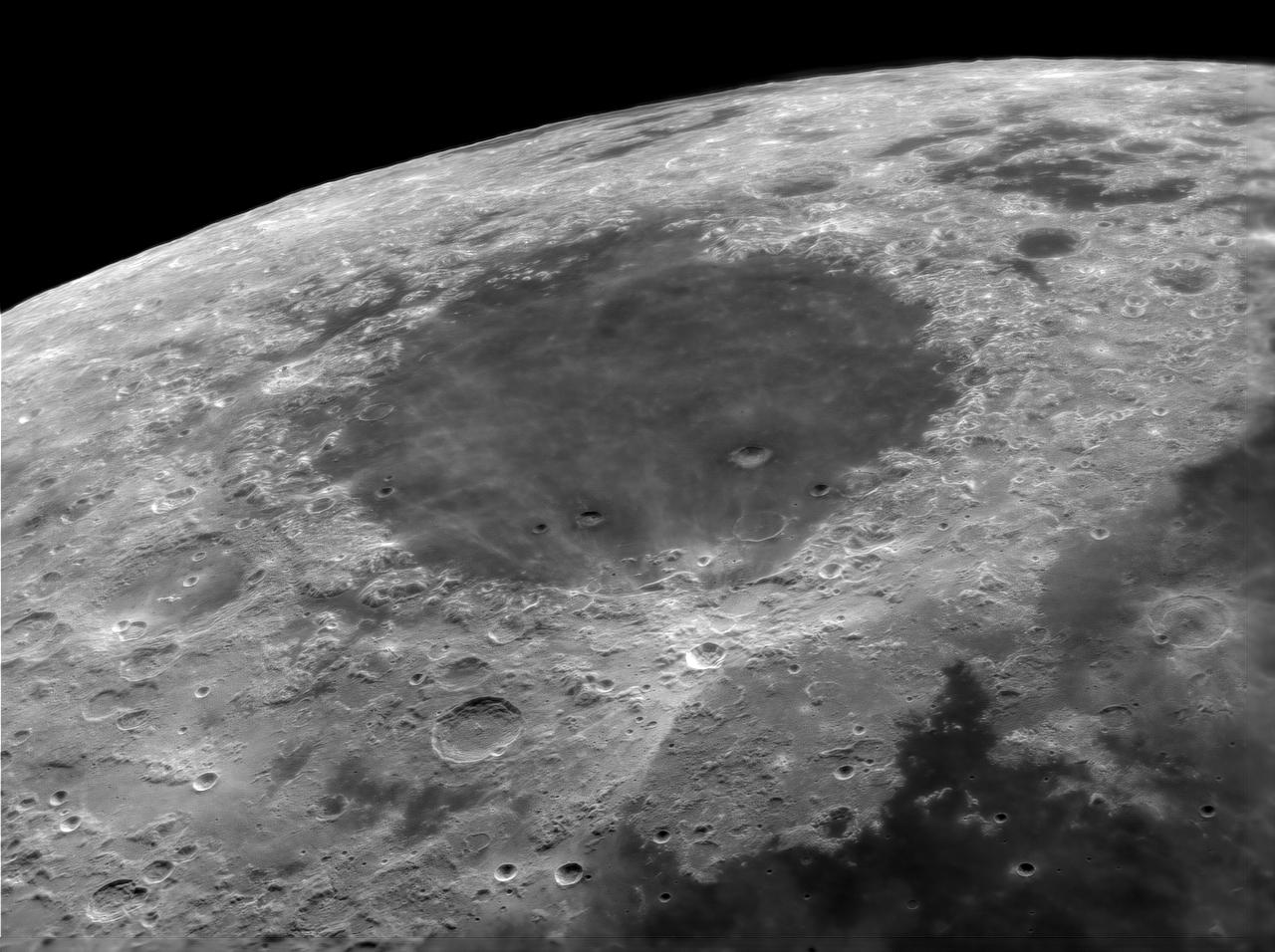
- 7 May: full moon (11.45am)
- 14 may: last quarter moon (3.03pm)
- 22 May: new moon (6.39pm)
- 30 May: first quarter moon (4.30am)
Stargazing Tips
- When looking at faint objects such as stars, nebulae, the Milky Way and other galaxies it is important to allow your eyes to adapt to the dark – so that you can achieve better night vision.
- Allow 15 minutes for your eyes to become sensitive in the dark and remember not to look at your mobile phone or any other bright device when stargazing.
- If you’re using a star app on your phone then switch on the red night vision mode.
- Need a stargazing telescope or binoculars? Check out our range of high quality observing equipment recommended by Royal Observatory Greenwich astronomers
Share your astronomy pictures
This month's banner image is one of the winning images, 'Milky Way Centre © Péter Feltóti', of the Insight Investment Astronomy Photographer of the Year competition. Would you like the chance to have your image of the night sky used for our banner image? If so, share your photos via our Royal Observatory Astrophotography Facebook group
You can also connect with us on Twitter: @ROGAstronomers
Observatory Online

The museum may be closed but our Royal Observatory Greenwich astronomers are still hard at work. In our new Observatory Online sessions, we will answer your questions about Astronomy. Simply tweet your question to our twitter account, @ROGAstronomers, and we will do our best to answer them. Be sure to add #ObservatoryOnline, #Museumfromhome and #sciencefromhome to your tweet!
Resources for teachers and students

The Royal Observatory Greenwich's learning team has also created
- Free animated videos that answer the biggest questions in astronomy and free resources to go alongside them.
- A whole host of podcasts featuring interviews with real space scientists, astronauts and active researchers working in UK universities.
- A 'Learning at Home' hub which contains a suite of resources for you to use at home and it even has an 'Ask the Astronomer' facility